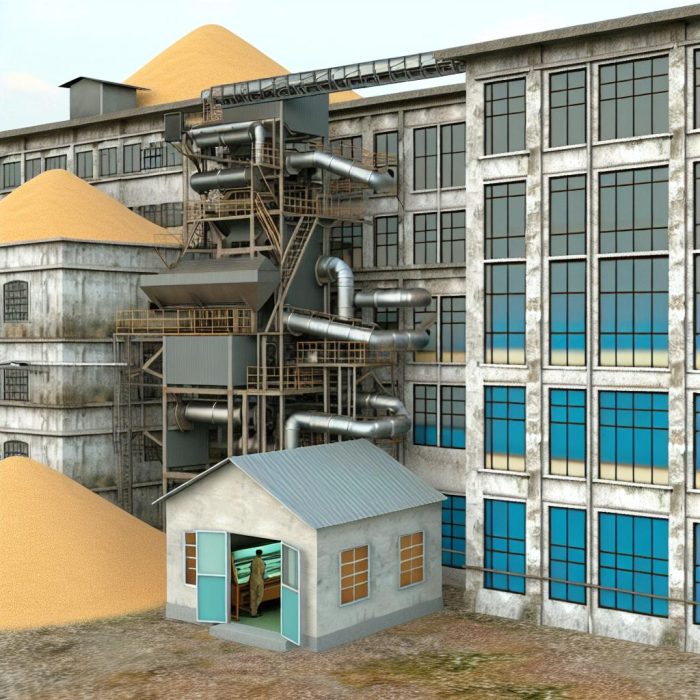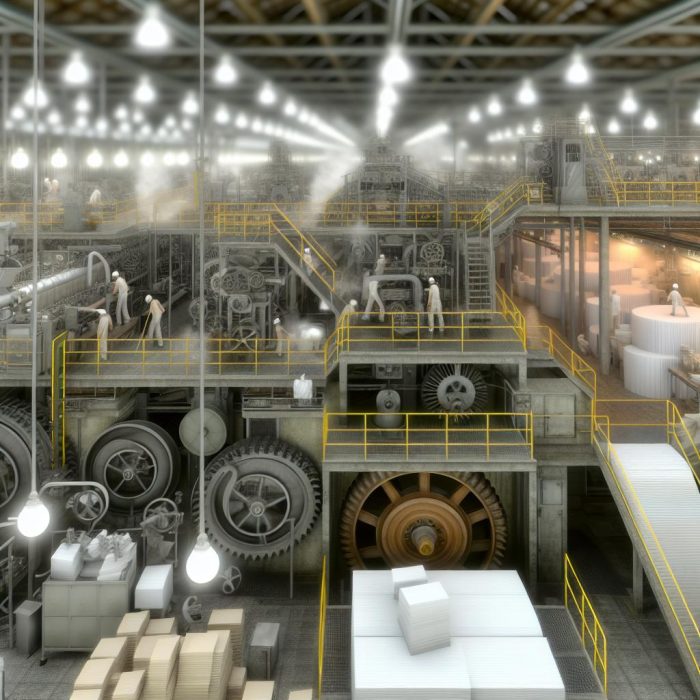Introduction to Textile Mills
Textile mills are a fundamental component of the global manufacturing industry, serving a crucial role in the production of fiber-based products. These products range from everyday clothing to sophisticated industrial materials. The process within these mills begins with raw fibers and continues through several stages, including spinning, weaving, knitting, dyeing, and finishing. Through these processes, raw fibers are transformed into finished products ready for consumer use. The history of textile mills spans multiple centuries, with innovations in machinery dramatically enhancing production capabilities and reshaping the landscape of manufacturing.
Historical Background
The origins of textile mills can be traced back to the industrial revolution of the 18th century, an era marked by significant innovation in Britain. Inventions like the spinning jenny, water frame, and power loom were pivotal. These technologies significantly boosted productivity by allowing for the consolidation of manufacturing processes into centralized locations known as mills. This shift marked the beginning of a new era in manufacturing, fundamentally changing economic and social structures. As time progressed, the influence of these innovations spread worldwide.
Industrial Revolution Impact
The industrial revolution brought about substantial advancements in the field of textile manufacturing. Before this period, textile production was primarily a home-based artisan activity. The introduction of mechanization in spinning and weaving, combined with new power sources such as steam and water, revolutionized the industry. These innovations reduced production times and brought down costs significantly, leading to a shift towards machine-driven industrial processes. This transition laid the groundwork for the modern manufacturing industry we know today.
Global Expansion
With advancing technology, textile mills began to spread beyond their initial geographical confines. European and North American countries were early adopters of these manufacturing processes. By the 20th century, the textile industry had found substantial footing in many Asian countries, including China and India. Lower labor costs and access to raw materials in these regions spurred this expansion. The globalization of textile production has greatly influenced global economic development and international trade, contributing significantly to the growth of emerging economies.
Operations and Processes
In contemporary times, textile mills are intricate operations involving multiple processes to transform raw fibers into desirable products. Each stage of production plays a vital role in determining the final product’s quality and efficiency.
Spinning
Spinning is the first major process in the production chain. It involves converting raw fibers such as cotton, wool, or synthetic alternatives into yarn. This stage is mechanized to a significant degree, employing machines such as ring and rotor spinners to achieve specific yarn characteristics. The quality of the yarn produced is crucial, as it impacts the properties of the final fabric.
Weaving and Knitting
After the spinning process, the yarn undergoes weaving or knitting to become fabric. Weaving involves interlacing two sets of yarns at right angles, creating a robust and structured fabric. In contrast, knitting involves forming loops of yarn, which results in a more flexible and elastic fabric. Each method offers unique fabric characteristics suitable for different textile applications, ranging from apparel to home textiles.
Dyeing and Finishing
The dyeing process imparts color to the fabrics, enabling them to achieve desired aesthetics and performance qualities. In addition to dyeing, finishing processes are applied to enhance fabric properties. These processes can improve aspects like durability, water resistance, and texture, ensuring that the fabrics meet the requirements of their intended use. Finishing is a pivotal step in ensuring that the final textile product is both attractive and functional.
Environmental and Economic Considerations
Despite their importance to the economy, textile mills face notable environmental and social challenges. The industry is actively seeking to address these issues through various initiatives aimed at reducing its environmental impact.
Sustainability Challenges
Textile manufacturing is resource-intensive, contributing significantly to pollution and waste. Challenges such as high water consumption, extensive use of chemicals, and textile waste disposal have prompted efforts to enhance sustainability. Initiatives are underway to incorporate eco-friendly materials and cleaner production technologies. These efforts focus not only on reducing the environmental footprint of textile manufacturing but also on ensuring better resource utilization and minimizing waste.
Economic Impacts
The economic significance of textile mills is undeniable. They create substantial employment opportunities and are crucial to economic development, especially in emerging economies. Textile mills form a critical link in the supply chain of the global apparel market. However, they are also subject to various challenges, such as fluctuating market demands and trade restrictions, impacting the stability and growth of the industry. Addressing these challenges is vital to maintaining the economic viability of textile mills.
Conclusion
Textile mills continue to occupy a vital position in the manufacturing sector. They are constantly evolving to incorporate technological advancements and meet market trends. Historically, these mills have been drivers of economic growth and industrialization. Moving forward, efforts to improve both sustainability and operational efficiency will be essential for their continued success. Exploring additional resources can provide further insights into the processes and advancements within textile mills.



